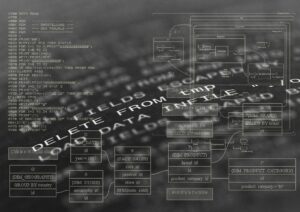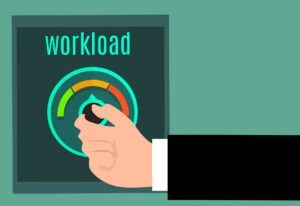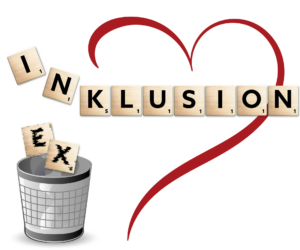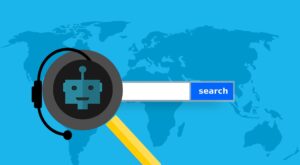
Artificial Intelligence and the Emerging Workforce
Pam Sornson, JD
January 2, 2024
The ultimate impact that artificial intelligence (AI) will have on the emerging workforce has yet to be determined. The technology itself is still too new, and the few released iterations of its current capacities only suggest what added services and benefits it may eventually provide. Experts note, too, that the digital science poses significant threats if its capabilities are used for nefarious purposes; present-day policies and safeguards do not yet have the capacity to police these concerns.
What is known is that there is an almost unlimited number of use cases for AI wizardry and that its adoption will upend virtually every aspect of industry, policy, and society. Already, emerging AI applications are changing how the world works and the direction its industries are moving. Maximizing the values offered by AI will require sophisticated knowledge and training. Preparing the workforce to both master existing technology as well as embrace future innovations will be a momentous task. Designing, developing, and implementing that task is the next step in the AI adoption process.

Generative AI – What It Is and Why It’s Becoming so Popular
Stated very simply, ‘generative AI’ amalgamates several different algorithms to create and process digital data into meaningful, useful information – ‘content.’ In this case, ‘content’ means the text, imagery, sound, and other computing capacities afforded by today’s computers. With AI, multiple coding techniques combine to present the varied data contained in each separate program into a cohesive, intelligible whole. The AI program scours billions of data bits in millions of databases to find information related to the user’s posited question, then organizes and presents them in a way that responds best to the inquiry. The result is a more complete response pulled from a more comprehensive range of communication tools. For example, asking the ChatGPT ‘bot’ (short for robot) to suggest options for a toddler birthday party results in a long list (10 items) of things to do, from choosing a theme to engaging parent participation. AI can also generate an essay about geology, analyze medical records for more accurate diagnoses, and adapt manufacturing prototypes into higher-functioning working models. These are just three among – literally – millions of other AI-driven services.
Because AI technology moves so fast and is so comprehensive in its delivery, it can – and does – outperform human actions in many, many tasks. Consequently, many companies have adopted the science to perform routine tasks within their organizations, a choice that often displaces the worker who had previously done that work. It is because of its swifter, more accurate performance capabilities that AI poses such a threat to the livelihoods of millions of workers worldwide. If a company can achieve its goals faster, with more accuracy, and at less cost, then making the shift to AI over human labor is a sound business decision. But what does that mean to the now-unemployed laborer?

AI and Today’s Workforce
AI has already displaced millions of workers, in part because the recent pandemic prohibited close contact between people, which caused the closing of millions of businesses. The global health crisis drove more than eight million American workers to ‘change’ their occupations, either by finding new work or by leaving the workforce altogether. In many cases, the jobs they left were subsequently ‘automated’ – taken over by an AI bot that was programmed to perform those specific functions. These occupations are often ‘routine’ duties that don’t require any creative inputs, such as data entry, product assembly, or even commonly occurring responses to consumer inquiries. Their automation reduced both virus exposure and payroll for many organizations.
Further, it appears that the coronavirus only accelerated the transition from human to technical ‘worker.’ The World Economic Forum predicted in 2020 that more than 85 million jobs would be replaced by AI technology by 2025 and that those occupations would straddle many industries:
Customer service representatives, vehicle drivers, and factory workers are among the ‘blue collar’ jobs that will slowly disappear.
Computer programmers, paralegals, and travel advisors are also on the block, even though that type of work itself requires more intellectual input. AI can be programmed to provide those capacities.
‘White collar’ occupations are not immune, either. The duties performed by financial traders and research analysts are also within the scope of operations facilitated by AI technology.
Clearly, AI-driven automated services are already taking over elements of the labor force and leaving the workers who had held those occupations without jobs. One facet of the AI evolution will be to find new occupations and opportunities to replace those lost employment options.

AI and Tomorrow’s Workforce
Fortunately, governments and industries are already discussing the potential pathways that might develop as AI continues to evolve. In the U.S. Senate, Majority Leader Chuck Schumer (D-NY) introduced his “SAFE Innovation Framework” in the summer of 2023, a plan that safeguards worker security within the greater context of the expansion of AI technology. That Framework is presumed to become part of the effort by the White House to develop a National AI Strategy that will outline how the country will adapt to the occupational and economic impacts of the transition to AI. Built into it are mechanisms that will also address the inequities of today’s fractured society. Again, the opportunities posed by this technology are almost unlimited.
However, industry experts aren’t as concerned about the immediate impacts of AI. They assert that today’s AI models aren’t as clever as the media presents them and that they are often hyped beyond their actual capacities. Many of those commentators also note that the programming can generate as many jobs as it takes out, if not more, which would provide the job opportunities needed to maintain a stable economy. Like any other technology, AI requires program updates, oversight, maintenance, and management, all roles typically held by human workers. There would be more of those as the technology expands into new arenas. They also add that AI will augment existing work, enhancing and improving the impacts of human inputs to maximize outputs and outcomes.
While no one knows where the global embrace of AI is headed, the ultimate goal should be for both industry and humanity to thrive during and after the transition into a fully AI-invested community.


